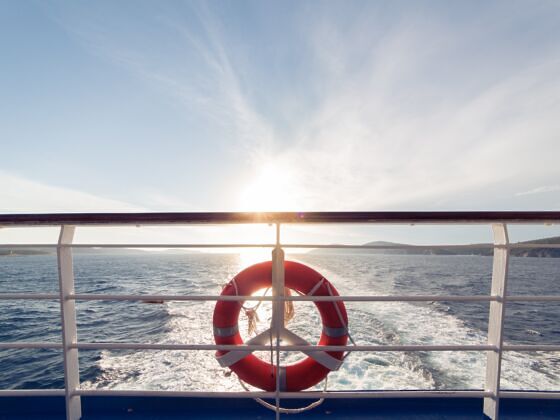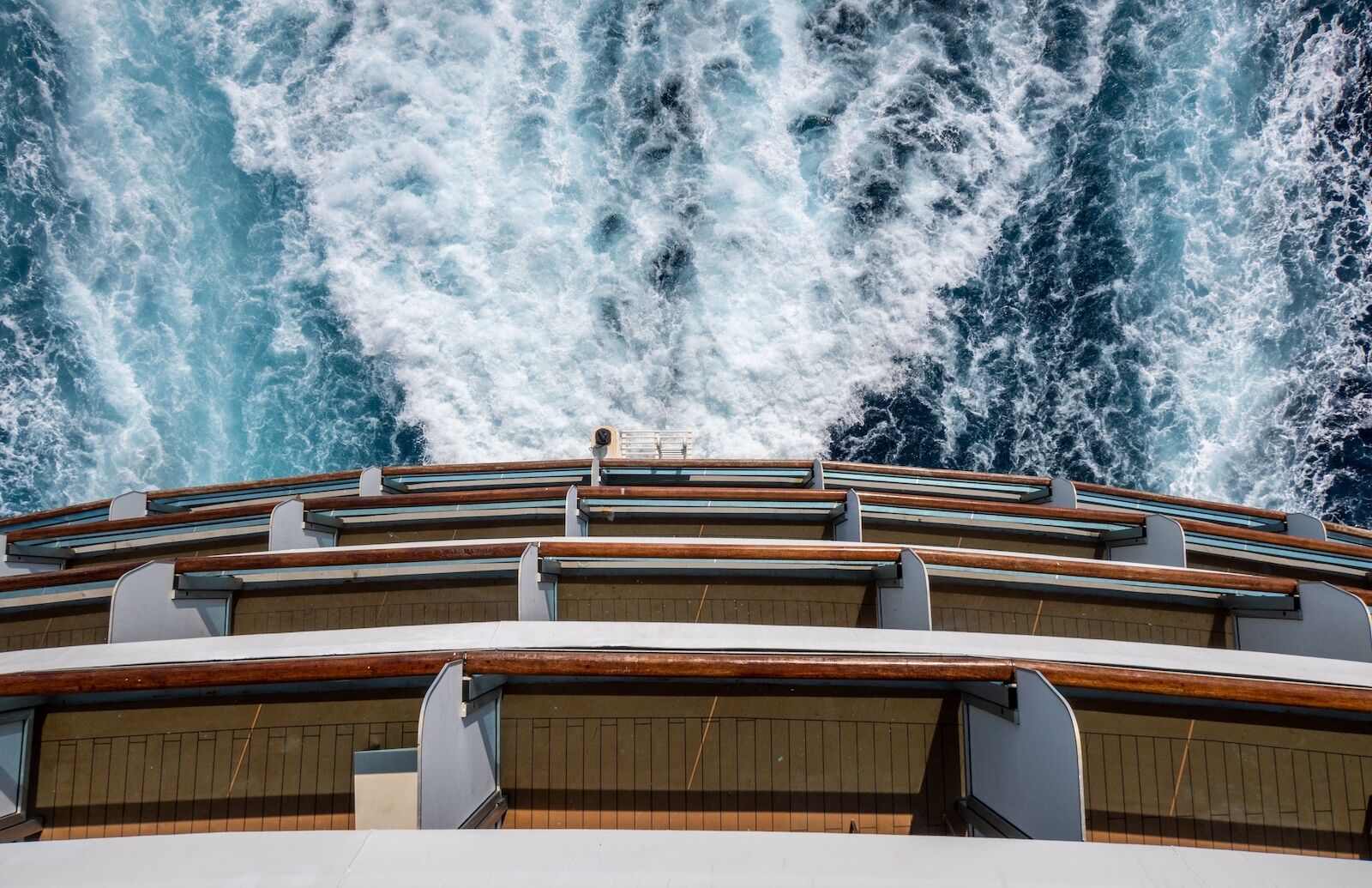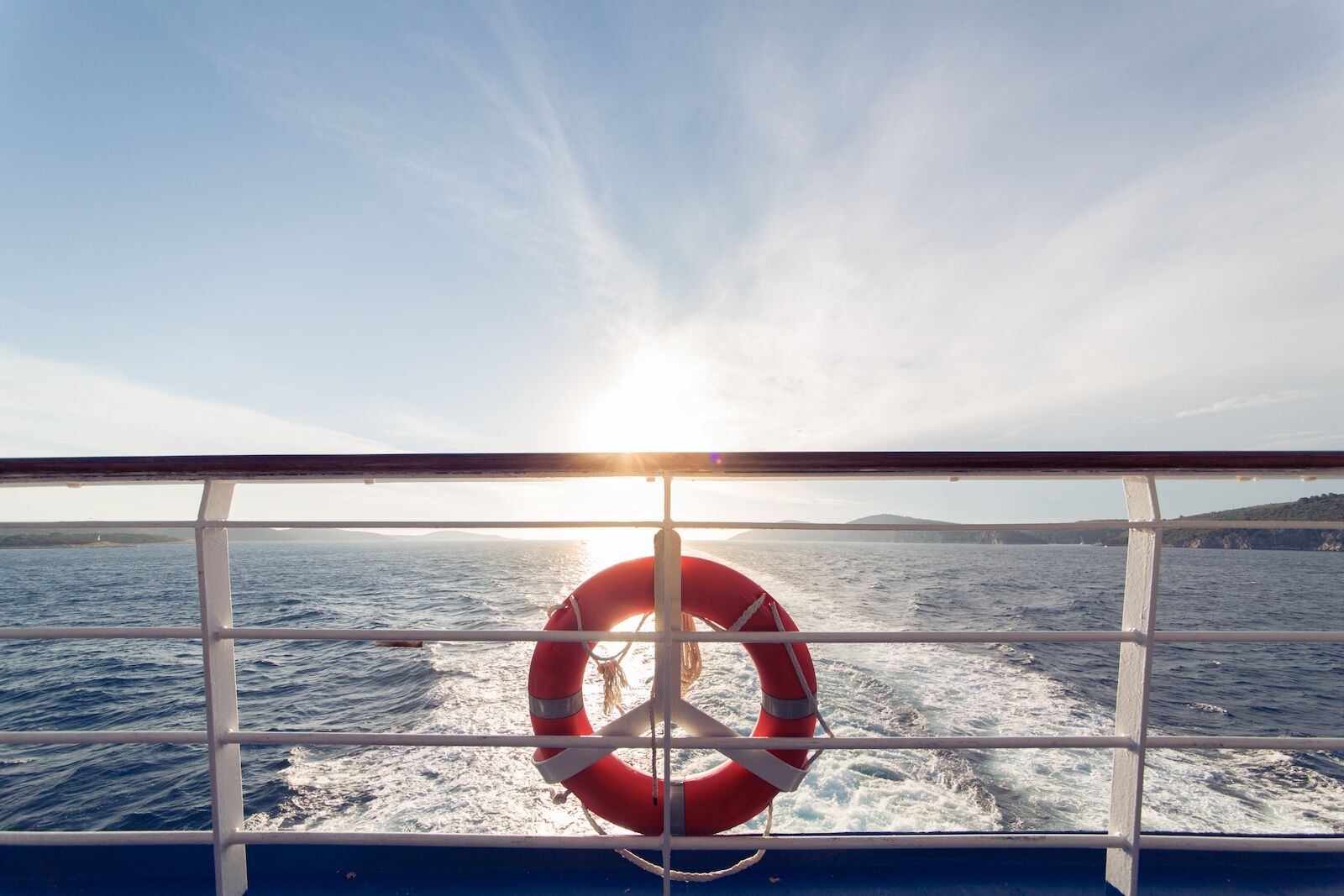If you’ve ever spent time at sea on a cruise ship, you probably have given some thought about what would happen if you, or any other passenger or crew, were to fall overboard. While it’s not a scenario that anyone likes to imagine while trying to have a relaxing vacation, it’s an intrusive thought cruisers experience, especially those who have been on long sailings like transatlantic crossings during which land is nowhere in sight for days on end. While overboard incidents are very rare, they do happen, and there are official measures and protocols in place to prevent and deal with these occurrences.


What Happens When Someone Falls Overboard on a Cruise Ship?
How often do people fall overboard on a cruise ship?

Photo: Pau Peset/Shutterstock
Reassuringly, overboard incidents are extremely rare. A report from the Cruise Lines International Association (CLIA) indicates that between 2009 and 2019, a total of 212 people fell overboard on cruise ships, with only 48 having been rescued. While over 200 people falling overboard in the space of 11 years might seem like an awful lot, in reality, the average incident rate for all cruise passengers over this period was 0.0004, a spokesperson for CLIA explains in an email.
The Department of Transportation tracks and publishes every incident that happens on board cruise ships that dock in the United States, including assaults with serious bodily injury, suspicious deaths, firing or tampering with the vessel, homicides, kidnappings, sexual assaults, rapes, thefts over $10,000, and missing persons. The quarterly reports published by the DOT indicates that between January and March 2024, one US national has gone missing on board a ship from Royal Caribbean Cruise Line.
Overboard incidents are almost never the result of someone losing their balance under normal circumstances. “Unfortunately, the vast majority of cases of individuals going overboard are a result of unsafe or reckless behavior, or some form of intentional act,” a CLIA spokesperson says.
What is done to prevent overboard incidents?

Photo: eldar nurkovic/Shutterstock
A variety of measures are taken to keep passengers and crew safe at all times, the most common-sense of which is to repeatedly “urge passengers to exercise due caution/diligence,” Ira Breskin, senior lecturer at the State University of New York Maritime College and author of The Business of Shipping (9th edition), explains in an email.
Blocking access to the outer decks during inclement weather with high winds or rough water is another way cruise lines keep passengers safe from falling overboard or just falling and hurting themselves. Cruise lines use barriers stretched across doors leading to the outside, as well as large printed notices, to inform passengers of the potentially dangerous situation.
Another obvious method to keep people from falling overboard is to erect railings that are high enough to prevent incidents. According to CLIA, “By law, railings must be 42 inches tall. This height governs the railing of ships sailing not only in the USA but elsewhere in the world.” Note that 42 inches is the minimum height required, and many cruise lines opt for even higher railings.
Also by law, cruise lines must equip their ships’ public spaces with video surveillance, as well as technology capable of capturing images of passengers or detecting passengers who have fallen overboard.
“The detection systems that have been prototyped since the Cruise Vessel Security and Safety Act was enacted [in 2010] have sought to be sensitive enough to detect a person going overboard and alarm a ship’s crew, but not be triggered by other objects such as birds flying by and causing false alarms,” the CLIA spokesperson explains.
MOBtronic is one such sophisticated system, with sensors placed in strategic locations around cruise ships for immediate detection in case of an overboard incident.
What happens when someone falls overboard during a cruise?
@cnn A man was saved by the US Coast Guard possibly 15 hours after he fell overboard on a Carnival cruise ship in the Gulf of Mexico. CNN correspondent Nick Valencia shows footage of the helicopter rescue. #cnn #news #fyp ♬ original sound – CNN
While overboard incidents are very rare, when they occur, they often end in death. Depending on the circumstances of the fall, a person may die on impact with the water or with the vessel. Those who survive a fall face a multitude of dangers at sea and are very hard to find, explaining why only 28.2 percent of those who fell overboard between 2009 and 2019 were rescued.
Miracles do happen, however, as proven by the story of a crew member on board NCL’s Norwegian Getaway who fell overboard near Cuba in July 2018 and survived the ordeal. After spending 22 hours in the water, he was spotted by a crew member on a different cruise ship, CCL’s Carnival Glory, and subsequently rescued. Coast guards surveyed more than 1,630 square miles of ocean looking for him.
No matter what, cruise line have strict protocols they adhere to when someone falls overboard, including alerting the local coast guard, stopping the ship, and turning it around to find the person who fell overboard. In an email, a CLIA spokesperson explains that “often, smaller boats that can move at high speeds are deployed from the ship to search for the person.” According to Breskin, other vessels present in the area where the person has fallen can be requested to participate in a search. When someone falls overboard on a cruise ship, time is of the essence: Potential injuries from the fall, the temperature of the water, and the movements of the water, among other dangers, are all factors that can accelerate a person’s death, hence the importance of detection systems. Whether or not a person is successfully rescued after falling overboard, an investigation is conducted to determine exactly what happened.